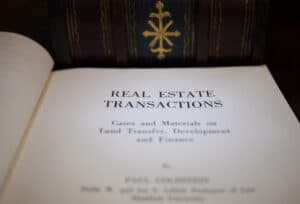As a rental property investor, you must know how prorated rent works. It is often necessary to charge prorated rent as a landlord.
This guide explains why, when, and how property owners charge tenants prorated rent. Keep reading to learn everything you need to know about prorated rental payments, how they work, and what the definition of prorated rent meaning is.
'Prorated rent' is a key real estate term investors need to understand. Prorated rent is the payment of a portion of the month or specific length of a lease agreement.
Several different scenarios require property owners, title companies, realtors, and other industry professionals to calculate a proration amount. Knowing when to use prorations for rent and additional charges is critical.
Prorated rent meaning is important to understand. If you don't understand the meaning or definition of the rental concept, you can make major mistakes that can cost you thousands of dollars for no good reason.
Prorated rent may seem like an insignificant part of property management. However, it is ethically correct to prorate rent even if a, and it helps landlords build rapport with future tenants.
In some situations, the law requires prorated rental payments or credits. If you mismanage prorated rent, a consumer can file a complaint. Laws governing housing discrimination are strict, and the burden of proof falls on the landlord.
So, while prorated rent payments may not add up to a significant amount in every situation, it is essential to know how to calculate them correctly. It also shows tenants that you are honest, follow the rules, and are serious about properly managing the business aspect of being a landlord.

Anytime a tenant moves into a property on a day other than the day rent is due, they should be charged a prorated amount for the month they are moving in. Passing up a payment for prorated rent, even if it is just for a day or two to avoid having to calculate it, shows your tenant you have a relaxed attitude about receiving rent for the unit.
It is not a good way to start a new tenant-landlord relationship. Additionally, charging for a period the tenant does not occupy the property appears shady. So, prorating rent is the only way to be fair to both parties and keep things professional.
You may need to charge the tenant for part of the month when you sign a new lease. Rental payments are usually due on the first. If a tenant is moving in on the 25th and there are 31 days in the month, it is customary for them to pay for seven days at a prorated rate.
It is also routine for landlords to charge a prorated amount for the first month, the first entire month, and the first and last month's rent when the tenant moves in.
In lower-income areas where potential occupants do not have as much cash on hand, landlords may allow the tenant to move in with just a deposit and the prorated amount, as long as the prorated period is not less than two weeks.
Sometimes, property owners or apartment complexes offer discounts. These are usually offered as a free month or months in advertisements. However, when a landlord offers these promotions, they typically prorate the free period over the entire lease as a discount off the market rate of the apartment, house, or unit.
Giving the concession as a prorated discount over the entire lease lets the property owner know that the new tenant will not just move in for the first free months and move out when they have to start paying rent.
If you sell a property to someone with a lease, you may need to give credit for pre-paid rent. Prorated rental credits are calculated the same way as prorated rental payments, but they are issued as a credit to the buyer for the number of days they pre-paid in the month before closing instead of as a charge.
If you are closing at a title company, they will calculate the proration amount and include it on the closing statement, which the buyer and seller sign at closing.
As a property investor, knowing how to calculate prorations even when you are purchasing a property correctly is essential.
Sometimes, a seller leases back property from a buyer after closing. Like pre-paid rental proration credits, these figures are usually calculated by an escrow officer and paid in closing.
When you do a leaseback, the purchase contract will list the total monthly rental payment the buyer will collect. The monthly rental payment amount is then broken down into a daily rent proration amount which is charged to the seller for the number of days left in the month the property closes and any additional months that they will occupy.
Leaseback periods can vary greatly depending on the deal. However, it is common for buyers and sellers to do leasebacks for short periods if the seller cannot vacate the home before the closing.
If you decide to terminate a lease at no fault of the tenant, you have to follow state laws and give the tenant credit for any pre-paid rent. Each state has different legal processes for lease terminations.
For example, Hawaii requires 45 days' notice and payment to the tenant for the prorated pre-paid rent. If you fail to repay a tenant, they may be able to sue you for the amount you owe plus damages.
All prorated rent is on the lease agreement. So, the party representing you in that contract typically calculates the figures.
Typically, a real estate owner or the property owner would fill out the lease. So, they would be the party responsible for determining the amounts.
Knowledgeable real estate agents are experts at calculating rent prorations and other necessary figures. So, if you are a new investor, it may help to partner with one of these professionals. Otherwise, the burden falls on you.

That does not mean property owners do not have to adhere to a specific method. Fair-housing laws require landlords to treat all tenants equally.
Even the impression that you are showing preferential treatment to one tenant or potential tenant could have costly legal implications. If a tenant can prove that you charged them in a different or less favorable method, a grant may rule in favor of them in a discrimination lawsuit.
You need to use the same method of calculating rental payments for the days a tenant will occupy a unit. It would be best if you also were consistent when giving prorated discounts.

Check landlord-tenant laws in your state for guidelines and laws for prorating rent.
The average number of days in a month is 30.437. Some people use this number to calculate prorations. To use this method, you need to figure out the number of days the tenant will occupy the property.
Then divide the monthly rent by the 30.437 average days in a month. After you have the daily prorated rent amount, multiply that by the number of days the tenant will occupy the property to get the total amount due.
Example: To calculate the daily prorated rent, you divide the monthly rent amount by 30.47. So, for a unit rented for $3,000 per month the daily rate is $98.56.
If the tenant moves in on February 20th during a leap year, you will charge them $98.56 for ten days. So, the total you would collect is $985.60.
You can also use the exact number of days in a month to calculate the prorated rent payment. There are between 28 to 31 days in a month.

Once you know how many days are in the month, divide the total rent amount for the month by the number of days to calculate the daily prorated rent. Then, multiply that by the number of days the tenant will live in the property to determine the total.
Example: If the tenant moves on July 3rd, you will use 31 days to calculate the daily rate. If the rent amount is $2,500, you divide $2500 by 31, which equals $80.65.
The tenant will reside in the property for 28 days. So, you multiple $80.65 times 28 to get the total prorated rent for July, which is $2,258.06.
A banker's month is 30 days. Using this calculation method, you divide the total rent by 30 no matter how many days are in the month. Using a banker's month is the preferred method for many property managers because it is easy to remember and straightforward.
It is also the required method in Texas. However, few other states require landlords to use this calculation method.
Example: If the rent is $2,000 per month and the tenant moves in on February 15th during a leap year, you first divide the monthly rent amount by 30 to get the daily prorated rent amount of $66.66. Then multiply that by the 15 days the tenant will occupy the property to get the total proration charge of $1,333.33.
Calculating the daily prorated rent amount based on the number of days in the year requires a different formula.
You need to determine the total rental amount for the entire lease contract. Then, divide that amount by 365 or 366, depending on whether it is a leap year.
Next, multiply the daily prorated amount by the number of days the new occupant will live at the property during their first month.
Example: If the monthly lease amount is $1,000, you multiply that by the number of months in each year to determine the total cost of the lease for the entire year. You then divide the total lease amount of $12,000 by 365 to get the daily rate of $32.88, which you will multiply by the number of days the tenant will occupy the property before the first whole month is due.
So, if the move-in date is March 19th, you would multiply the $32.88 daily prorated rent by the 13 days the occupant will live there in March for a total payment of $427.44.
If calculating prorated rent is challenging, you can use an online prorated rent calculator. These calculators have an option for selecting the method by which you want to calculate the prorated rent.
They are pretty easy to use and accurate. If you choose to use a rental calculator, it is crucial that you stay consistent to ensure you are charging each tenant the same way.
You may also want to bookmark your preferred calculator for future use. That way, you can easily find it and prevent confusion.
In addition to rental prorations, many other monthly fees, taxes, and dues are prorated during real estate transactions. Title companies handle most of these promotions and include them on the closing statement.
An escrow officer uses a computer system to generate a closing statement and calculate prorated charges and credits. However, it is a good idea to familiarize yourself with these closing-related expenses.
The escrow agent has to manually choose whether to apply the prorations as a credit to the buyer or seller. If you are meant to receive a credit for taxes or HOA dues you pre-paid in closing, and the title company applies it instead as a closing charge, you can lose thousands of dollars.
If you charge a flat fee for utilities or any other monthly expenses that are not included in the rental payment, you will need to calculate those using the same method you use for prorating rent.
Mortgage prorations are calculated from the day the loan funds until the end of the month. If you close after 5 p.m. on Friday or on a weekend, your loan will not fund until Monday or possibly Tuesday. So, prorations on the closing statement should not begin until the day the file actually funds.
Furthermore, if there is a three-day right of recession, common in home equity line of credit (HELOC) transactions, the prorated amount does not start until the recession period ends.
When escrow files do not close on time, it is the legal responsibility of the title company to rework the settlement or closing statement, issue it to all parties, and collect and distribute funds for changes in the proration amounts.
Taxes and HOA dues are prorated between the buyer and seller at closing. Taxes are generally collected at the end of the year. So, the title company determines the daily tax rate by dividing the total estimated taxes by the number of days in the year.
They then multiply that number by the number of days the seller owned the home, and they apply that as a credit to the buyer. The buyer receives the credit in closing, but they are responsible for paying the entire tax debt at the end of the year.
HOA dues differ because they are usually collected at the beginning of the year. So, the title office uses the same method for determining the daily HOA prorations, but they give the seller credit.
There are certain times when tax payments are credited to the seller, though. For example, tax bills are generally sent in October or November. If the owner pays the bill for that year in October and sells their property in November, they would receive a credit.
Likewise, if the HOA fees are not due yet, but the seller occupies the property for a while, and the buyer is responsible for paying them, the buyer receives a credit.
Most expenses can be prorated and charged to a tenant or buyer if agreed to in the sales contract. However, homeowner's insurance and home warranties are rarely prorated unless a home is being sold to an ex-spouse or another individual named in the homeowner's policy, and that policy will remain in effect until the end of the year.
When it comes to homeowner's insurance, these situations are scarce, and it is unlikely that you will ever have to worry about prorating an insurance policy.
While you may understand the ins and outs of rental prorations, your tenants often won't. It is important that you are able to answer their questions.
In order to calculate 6-weeks of free rent, you need to figure out the prorated weekly rate. To do that, you need to divide the total lease amount by the number of weeks in the lease term.
For example: If your monthly rent for a one-year lease is $1,000, you multiply that by 12 to calculate the total rent for the lease term, which is $12,000.
Then, you divide $12,000 by 52 weeks, which gives you a weekly rate of $230.77. Next, multiply the weekly rate times the number of free weeks giving you a total discount of $1,384.62.
The discount is then divided by 12, and $115.38 is deducted from the monthly rent of $1,000 making your monthly rent $884.62.
A prorated price breaks the total cost of something into a daily rate so the seller or provider can charge the buyer a partial payment for the number of days they are actually using the product.
Any payment can be prorated. Contracts are often prorated if one of the parties terminates before the agreed period.
Insurance companies prorate payments for insurance premiums. However, they usually charge the prorated days and the first month.
In terms of lease agreements, landlords often prorate the rent for the first month because tenants rarely move in on the 1st.
Pro rata is a legal term derived from Latin. In Latin, 'pro rata,' means proportion. It is a term used for a division of funds between two people.
The payment or charge could be for a portion of someone's interest in a business, payment for the balance of an insurance policy, or prorated rent.
Legal documentation may use the legal term 'pro rata' in many different civil proceedings, including family, small claims, and eviction court.
In most situations, prorated rent is completely normal. In fact, it is the ethical way to handle rental payments.
Laws for the method and when a landlord charges prorations are unclear in some areas. However, Fair Housing Laws do prevent a landlord from prorating one tenant's rent and making another pay the entire month.
It is also illegal for a landlord to issue a credit for the remainder of a lease to one tenant and not another without cause. If a landlord does not handle prorations consistently, the tenant may have grounds to file a discrimination lawsuit.
If you have questions about whether or not your landlord owes you a prorated rent credit, check your lease agreement. All charges and payments between the tenant and landlord must be in the lease.
If either party fails to pay proration amounts listed in the lease, the party may file a civil suit to attempt to collect the money owed.
Just like calculating rental property values or return on investment (ROI), handling prorated rent is part of being a rental property owner. Prorations are relatively simple when you know how to calculate them.
However, it is vital to remember that you must adhere to local laws if they regulate prorated rent in your state. If there are no requirements, you need to decide on a method that works for you and stick with it to avoid the appearance of discrimination.
You can also bookmark and reference this guide if you need a reminder on how to calculate prorated rent in the future.
We encourage you to share this article on Twitter and Facebook. Just click those two links - you'll see why.
It's important to share the news to spread the truth. Most people won't.